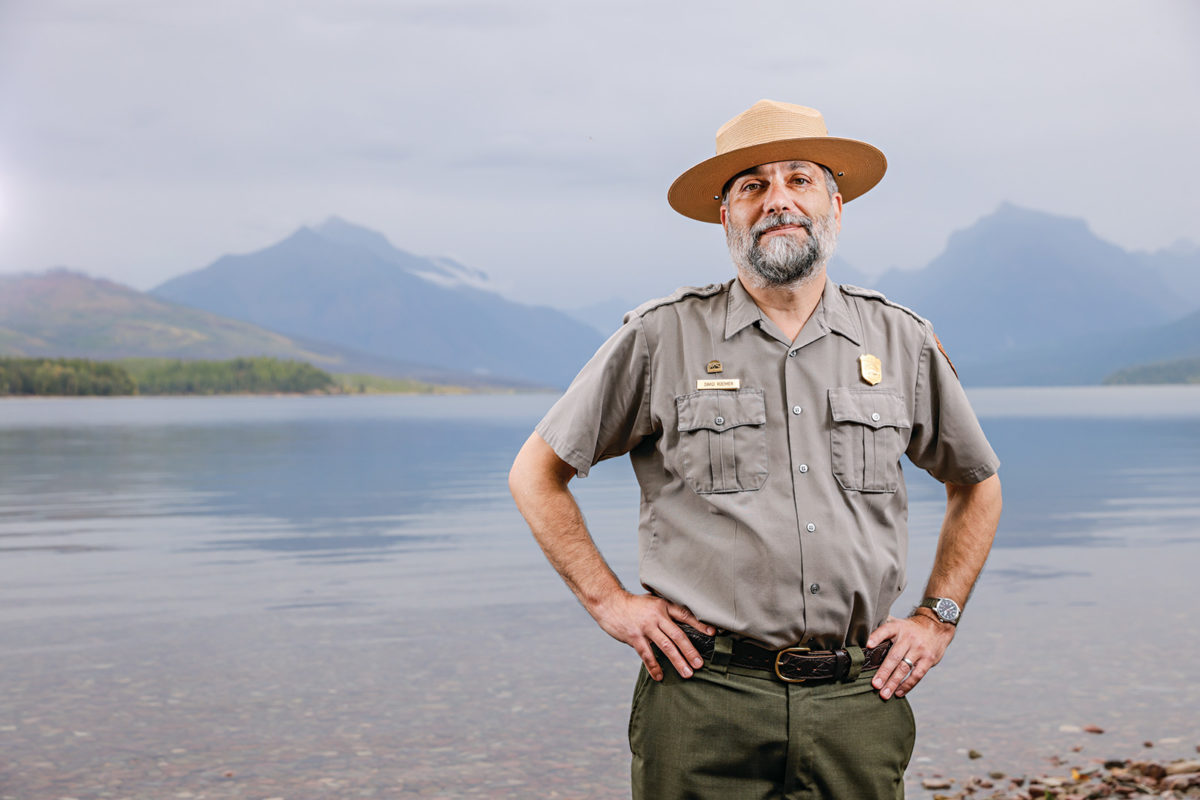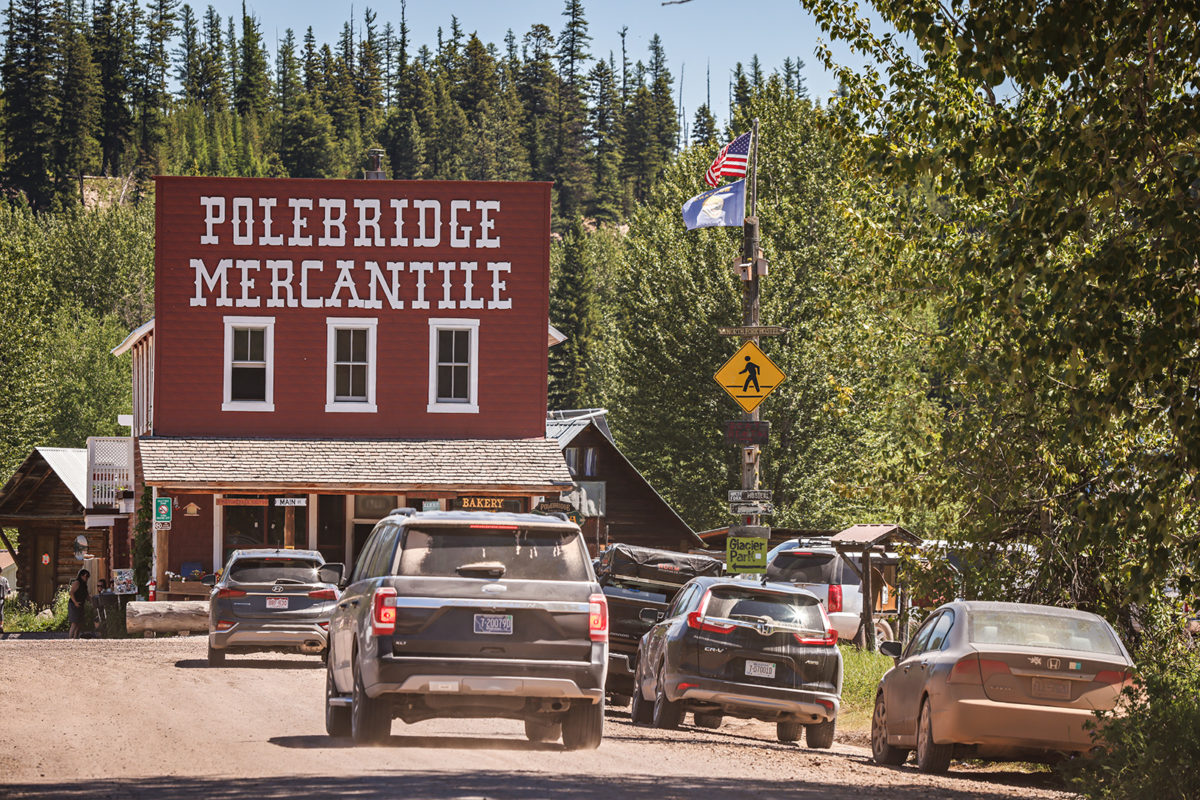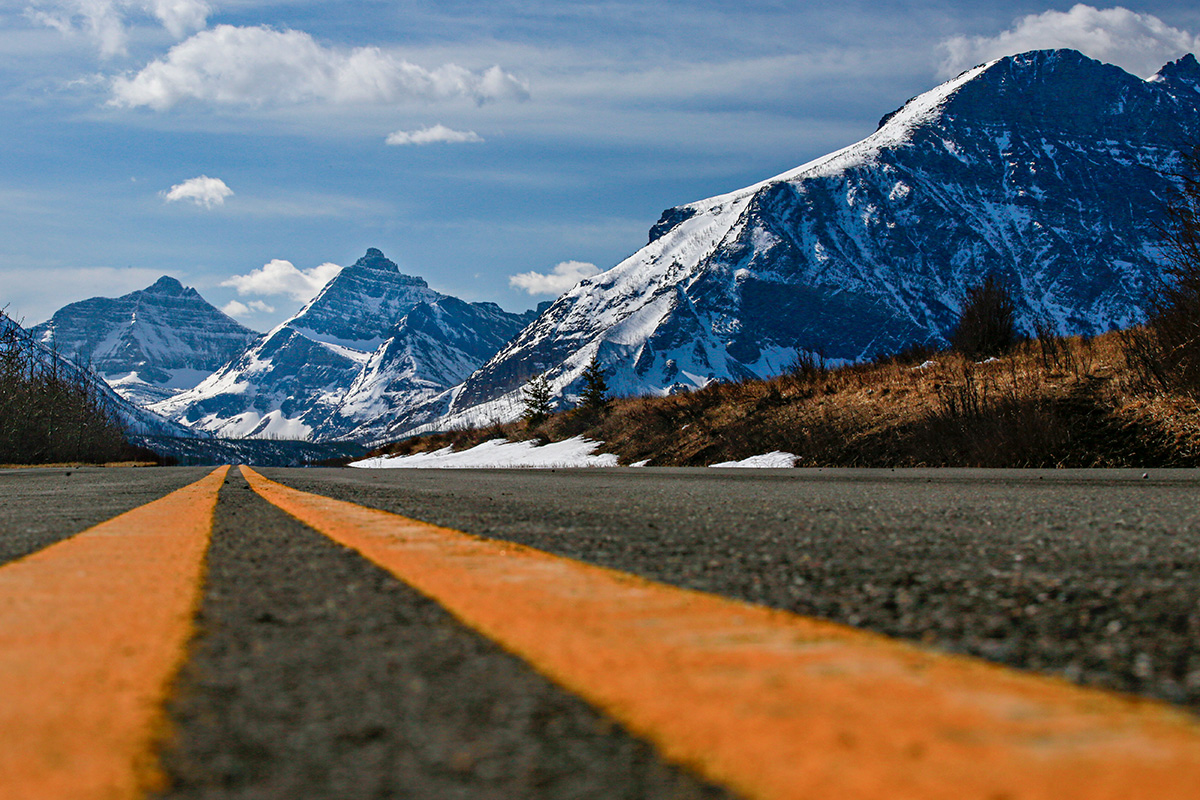Glacier Park Taps Local Stakeholders for Feedback as it Shapes Vehicle-Reservation System for Third Year
Persistent overcrowding triggered an adaptive “managed access” program for vehicles at popular park entrances, with expansion possible under a determination due out in mid-December
By Tristan Scott
As Glacier National Park finalizes the details of an evolving vehicle-reservation system slated to go online for a third summer in 2023, the most urgent refrain from gateway business leaders is: When?
When will they know next year’s plan to manage vehicle access at entrances girding the million-acre park’s sprawling footprint, around which the economic picture is as diverse as ecologic? When can they begin sharing specifics of the adaptive system so that guests won’t be “blindsided” by changes to its configuration next summer? And when will they know whether two popular entrances that so far have remained unencumbered by the reservation requirement will be added to the list?
“We need whatever plans you have as soon as possible so we can relay that information to our guests and educate them,” said Sanford Stone, whose family owns Park Cabin Co., an east-side hospitality and lodging business in Babb. “Just as the east side and west side of the park have different management needs, we have extremely different economic needs. So, I would urge as much advance notice and flexibility as possible.”
Speaking to park administrators last week during a tele-meeting aimed at exchanging feedback with area business owners, Stone said the main problems surrounding the reservation system’s debut in 2021 stemmed from its sluggish timing, causing confusion for the throngs of visitors who had already begun laying plans for their summer adventures, a process that begins a year or more in advance for out-of-state travelers.
In addition to requesting an expedited planning timeline for 2023, a top question from the queue of business owners centered on a pending administrative determination about whether to add vehicle-reservation requirements at two popular east-side entrances – Many Glacier and Two Medicine.
According to Glacier Park Superintendent Dave Roemer, the park is prepared to address those pressing needs by mid-December once it finalizes the details of its 2023 vehicle reservation pilot program, which will bear striking similarities to its previous two iterations, as well as some “tweaks” and changes based on “lessons learned.”
“We’ve now managed access to Glacier during the peak months of summer visitation in 2021 and 2022, and the thing that’s on everyone’s mind is what is that park management going to look like for 2023. We have not yet made that determination,” Roemer told attendees of two virtual meetings on Nov. 17 and 18, with each proceeding tailored to the businesses’ respective geographic locations ringing a park that straddles the Continental Divide. “These meetings are to review with you all of the data we’ve collected from ’21 and ‘22 and get your feedback for ’23, as well as for the long-term future.”

For the past decade, the only thing certain about Glacier’s long-term future is a steady and reliable increase in visitation demand, which has spiked 64% since 2012 and accelerated at an even greater clip in the wake of the pandemic, the effects of which touched off an unprecedented public demand for outdoor recreation. The consequences of the uptick in demand in Glacier — and particularly along its iconic 50-mile alpine highway traversing the Continental Divide at Logan Pass — have at times been paralyzing, manifesting in gridlock traffic and bottlenecking that burdened visitors with inconvenience while also presenting safety hazards and wreaking havoc on the park’s resources.
To curb and mitigate those effects, park officials are for the third year in a row crafting a temporary pilot system requiring motorists purchase an advance reservation online (in addition to their park entrance pass) before they can drive through the heart of Glacier National Park at the high summer season.
The mechanics of the system are as follows:
In both 2021 and 2022, visitors were required to purchase an advanced reservation online in order to enter the popular Going-to-the-Sun Road corridor at its two access points in West Glacier and St. Mary. Visitors who showed up without a reservation were turned away and were often encouraged to head toward the entrances where a ticket wasn’t required, including Polebridge on the west side and, on the east, Two Medicine and St. Mary.
Beginning in 2022, the park extended its vehicle-reservation requirements to include the North Fork area, which is accessed via the Polebridge Ranger Station and isn’t joined to the famed Going-to-the-Sun Road corridor. Park officials also modified the vehicle reservation checkpoint, or “filter system,” at the St. Mary Entrance by moving it five miles west to Rising Sun, allowing visitors without a reservation to access services at the St. Mary Visitor Center and, as a result, diffusing congestion.
Visitors also had the option of accessing the Sun Road by vehicle without a reservation so long as they did so after 4 p.m. or before 6 a.m. They could also enter the park’s popular Many Glacier and Two Medicine areas, which remain exceptions to the reservation requirement.
The decision to include the North Fork entrance on the list of those requiring reservations in 2022 was based on lessons park planners learned the year prior, when a flood of visitors converged on a mostly unpaved, off-the-grid corner of the park that’s ill-equipped to accommodate dense traffic or high volumes of visitors.
Park officials likened the overcrowding problem to a big balloon — pinch it in one area and it bulges out in another.

In 2023, that analogy’s logic could prompt Glacier to implement reservation requirements in the Two Medicine and Many Glacier valleys, which did not require vehicle reservations last year but frequently restricted access due to overcrowding, swinging their gates closed for periods running up to several hours long.
“One of our priorities in 2023 is avoiding gate closures at Many Glacier and Two Medicine,” Phil Wilson, the park’s chief of resources, told business representatives. “We are taking what we learned this year into consideration as we determine what to do at Two Medicine and Many Glacier in terms of reservations, but no decision has been made.”
For business owners from East Glacier to Babb, allowing visitors unfettered access to the park via the Two Medicine and Many Glacier entrances has been critical in recovering from a pandemic-related downturn in 2020, which saw the complete closure of the park’s eastside entrances following a joint decision between the park and the Blackfeet Nation; not only does the Blackfeet Indian Reservation border the park’s eastern boundary, but the tribe’s elders can be highly vulnerable in the face of a health crisis.
When those entrances shuttered in 2020, hoteliers and shop owners barely survived; if the park moves to restrict those entrances in 2023, many of them are worried they could experience another round of setbacks.
According to Steve Byrd, the park’s chief of commercial services, the aim of soliciting feedback from gateway businesses is to address those concerns in the planning process for next year. Byrd assured business owners that the park is committed to an “adaptive” approach when engineering and executing the pilot program, which can be refined as situations arise.
“Any action that we take will have the ability to be adjusted to those unique conditions,” Byrd said. “Whatever allocation we start with, if it isn’t hitting the desired conditions, we have the ability to adjust that. That adaptive management flexibility, and being able to leverage the best available management data we have, is an important part of the process.”
Last year, the park said its adjustments included the changes at the St. Mary Entrance Station, as well as the option for visitors to purchase from a limited pool of vehicle reservations up to 60 days in advance. The reservations for the Sun Road entrances were valid for three days last year as opposed to seven days the summer before, while reservations to the North Fork were valid for one day only.
“We made those adjustments to match visitation patterns,” Susy Sidder, Glacier’s visitor-use management program manager. “Because this was the first year of vehicle reservations in the North Fork, we went with 6 a.m. to 6 p.m. requirement window to see how, operationally, those hours would affect visitation. We also offered a primary booking window that was 120 days in advance instead of 60 days,” which allowed visitors more advanced planning.

Another chief concern for gateway businesses relates to road construction, especially as the Lake McDonald Utilities project is set to continue next summer on the west side of Going-to-the-Sun Road. Visitors should anticipate daytime delays of 30 minutes between the four-way intersection at Apgar and the Lake McDonald Loge, and nighttime delays of up to two hours.
The park’s administrative staff also shared data indicating the program’s success, including the reservation system’s proven ability to blunt the traffic spikes at park entrances that led to congestion and early fill times at the Logan Pass Visitor Center, which stands as the number-one destination for most visitors.
“I’ve heard the stories about brawls over parking spaces and we’d really like to avoid that kind of pressure,” Roemer said.
In the North Fork, district ranger Jim Dahlstrom said the reservation system worked well last summer, pointing to a surge in visitation after the requirement expired as testament to its success.
“We had more people arriving in the days after reservations ended than we did most of the summer,” Dahlstrom said in an email. “Once again, it illustrates the demand. Overall, it worked very well to enhance the visitor experience for those who obtained a reservation. There was some confusion regarding the differing times, and a few other hiccups along the way.”
Still, those hiccups didn’t match the growing pains of the previous two summers, and park officials are hopeful that this year’s version of the reservation system builds on the successes of previous years while ironing out the wrinkles.
Glacier will move forward with its pilot program despite recent announcements that other parks are rolling back their reservation requirements, including Yosemite. According to Rachel Collins, a visitor-use project manager from the National Park Service’s Denver office, it’s yet another point underscoring that every park has unique needs.
“The scaffolding that we’re building this on might be shared by the same agency, but we want each park to adopt strategies that are specific to the communities it serves,” Collins said.